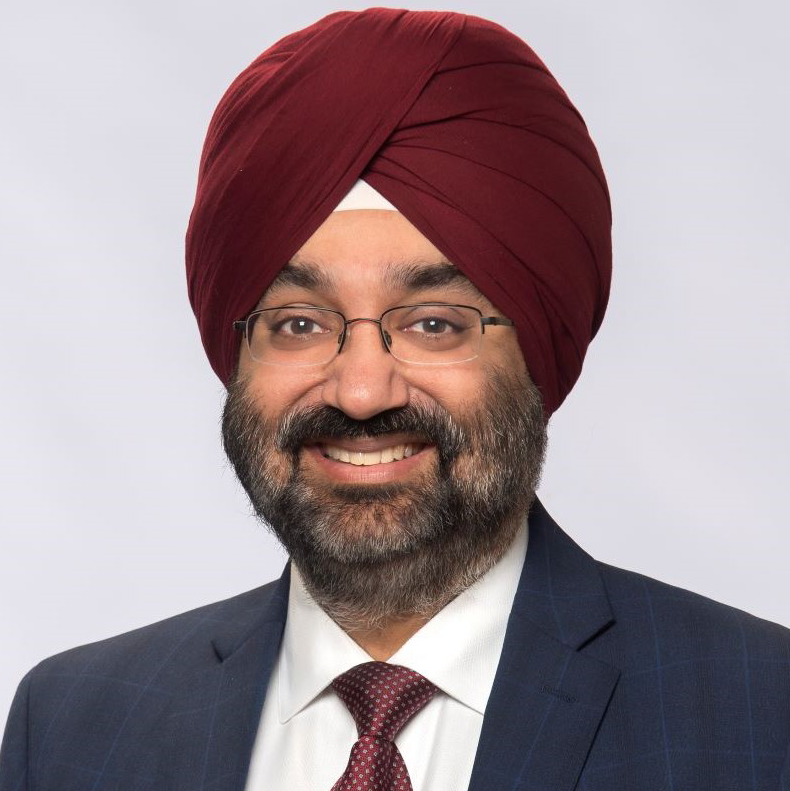Chronic graft-versus-host disease (GVHD) occurs in up to 70% of patients who have undergone an allogeneic hematopoietic stem cell transplant and is the main cause of late, non-relapse mortality.1 It is also a major cause of impaired quality of life later after transplant.2,3 However, for community practitioners who do not encounter transplant patients often, signs and symptoms of chronic GVHD across potentially involved organ systems can be easily missed, especially when a patient is further removed from transplant.
In the following conversation, two of the foremost experts on chronic GVHD discuss the basics of differentiating among GVHD subtypes, the importance of coordinated multidisciplinary care, and the essential role of survivorship care plans in ensuring optimal long-term outcomes for transplant survivors who have transitioned to community-based care. Valuable educational resources for both patients and providers are listed.
Dr. Cutler: Before we really get into the nitty gritty of chronic graft versus host disease (GVHD), we should understand the differences between acute and chronic GVHD. Although we traditionally think about acute and chronic GVHD based on timing after transplant, in fact the biology of the two processes is somewhat different. As a result, the clinical manifestations of acute and chronic GVHD are really quite different. Acute GVHD typically affects three organs: the skin, the GI tract, and the liver. Chronic GVHD, however, is a much more pleomorphic clinical syndrome.
Dr. Majhail, could you describe the clinical signs and symptoms of chronic GVHD?
Dr. Majhail: Yes, certainly Dr. Cutler. Our traditional thinking about GVHD has changed over time. Historically, we had this arbitrary cutoff of what happened before Day 100 and what happened after Day 100. As we have learned more about these two syndromes, we have clearly recognized that the timing is less important; what is more important are the clinical manifestations because, as Dr. Cutler mentioned, they are very distinct syndromes with respect to the organs involved and what the related signs and symptoms tend to be. Therefore, as we think about chronic GVHD as a concept, we think of a syndrome that typically happens later post-transplant. Having said that, however, we have to be careful because sometimes we can have acute GVHD also manifest later on in the disease course, which is referred to as late-onset acute GVHD disease. Acute GVHD can also evolve at some point into chronic GVHD, which is known as an overlap syndrome. In my own rubric, I always think about the timing as to when this happens. I think about the clinical manifestations of acute versus chronic GVHD. In addition, as Dr. Cutler mentioned, the organ systems involved are very important as we think about differentiating between acute and chronic GVHD.
Outside of concepts and in clinical care, the majority of acute GVHD happens early after transplant while the patient is still at the transplant center. Even in the context of late acute GVHD, many of the associated signs and symptoms will happen in the context of procedures at the transplant center, such as donor lymphocyte infusions. For these reasons, it is mostly chronic GVHD that our colleagues in the community must be more cognizant of.
There are some really distinct manifestations in both syndromes that help us differentiate between acute versus chronic GVHD. For example, just focusing on the skin, an angry-looking maculopapular rash can occur with either acute or chronic GVHD. However, cutaneous sclerosis and fibrosis, lichen planus-like eruptions, or poikiloderma are very characteristic of the latter.

Corey Cutler, MD, MPH, is the director of the Stem Cell Transplant Program at the Dana-Farber Cancer Institute in Boston and a professor of medicine at Harvard Medical School. He is also an Affiliate Faculty Member of the Harvard Stem Cell Institute, Cambridge, MA. Dr. Cutler’s research focuses, in part, on novel methods of acute and chronic GVHD prophylaxis and therapy.

Navneet Majhail, MD, MS, FASTCT, is the physician-in-chief of blood cancers for the Sarah Cannon Transplant and Cellular Therapy Network. His research focuses on disparities, quality of care, and survivorship, as well as prevention and management of complications, related to blood and bone marrow transplantation.

The thing I like to tell my patients is that until proven otherwise, any odd clinical syndrome occurring after transplant is related to chronic GVHD.
Corey Cutler, MD, MPH
Dr. Cutler, perhaps you can provide additional specifics regarding other organ manifestations?
Dr. Cutler: Of course. When we think about chronic GVHD, it is important to recognize which are the most frequently involved organs. Dr. Majhail has already mentioned the skin and some of the manifestations that can occur there. After the skin, organs like the mouth, the eye, and perhaps the liver are the next most commonly involved. In the mouth, we tend to see erythema and lichenoid-like changes of the buccal mucosa. When things are severe, we may even see oral ulcerations, which certainly should be differentiated from viral outbreaks. Eye involvement is typically evident through dryness and corneal abrasions or other inflammatory manifestations that typically involve the cornea; however, the eyelids and the meibomian glands certainly can be involved as well. The liver is tricky because it is not an organ that we can obviously see or evaluate directly. Typical liver function abnormalities, such as hyperbilirubinemia, are common to both acute and chronic GVHD. The chronic GVHD manifestations of the liver are often interpreted in the context of what other organs are involved and the associated clinical manifestations.
Following that, we have the GI tract, which can be involved with chronic malabsorption and weight loss. We have the myofascial system, which can be considered somewhat distinct from the skin with deeper changes of sclerosis, sometimes myositis. These manifestations can really contribute to the sclerotic pathobiology that we see in chronic GVHD, which often leads to limitation of mobility across major joint systems such as the wrists, elbows, or even the ankles. We very often forget about the genitourinary system, and this is especially overlooked in women. It is, of course, composed of mucosal membrane and tends to be involved in individuals who also have other mucosal membrane organ involvements, such as the mouth or the eye. Even rarer are some of the non-classic organs that we think about in chronic GVHD, and there certainly are renal and neurologic manifestations of chronic GVHD, as well as hematologic manifestations, such as autoimmune cytopenias.
The thing I like to tell my patients is that until proven otherwise, any odd clinical syndrome occurring after transplant is related to chronic GVHD.
We involve a lot of subspecialists at our center in the care of our transplant patients. How do you incorporate subspecialists into your practice, Dr. Majhail?
Dr. Majhail: You are spot on, Dr. Cutler. At the end of the day, it is a team effort as we think about our patients who are surviving long-term post-transplant and especially for those patients who return back to the community. Those patients do not have the safety net of the specialized expertise of the providers at the transplant center. I think that transition points in care — as patients go back to the community and move on from the transplant process — are really important and are where care coordination is so critical.
We are still trying to understand the pathogenesis of many of these chronic GVHD-related syndromes, but they are autoimmune syndromes. For unclear reasons, maybe because of some kind of an inciting event, we have seen patients who are many years out from transplant who can develop chronic GVHD out of the blue. I will emphasize, though, this is a rare event, as most chronic GVHD happens in the first 2 to 4 years post-transplant. I totally agree with Dr. Cutler that, for patients, there should be a high level of vigilance and low threshold to start investigating whether a concern might be related to chronic GVHD if someone has had an allogeneic transplant.
The important takeaway message here is, the sooner we detect and diagnose chronic GVHD, the sooner we start treatment, the more successful the outcomes are versus getting into a situation where chronic GVHD, which we know can cause significant morbidity and mortality, gets to a point where it is not manageable anymore.
Dr. Cutler: With that in mind, it is probably important to talk about how we can support our community providers in the early identification of chronic GVHD — regarding both diagnosis and important considerations for referral back to the transplant center. There are a couple of resources out there that I think are really quite good. The first is a supplement to the journal, Transplantation and Cellular Therapy, which was published in 2024 and has short articles on the major manifestations of chronic GVHD affecting the important organs like the skin, the mouth, the eyes, and the lungs.4 These are broad overviews that describe the major manifestations, the diagnostic tests, and things that should be done, at least early on, for management of these individual organ manifestations.
There is also a video series by the American Society for Transplantation and Cellular Therapy, which is a little more patient friendly and really goes through a timeline of the post-transplant course and discusses referral back to the transplant center and early identification of chronic GVHD signs and symptoms from the patient’s point of view.5
Dr. Majhail: The other thing I will add here, Dr. Cutler, is, that as we think about our colleagues in the community including our referring hematologist, oncologists, primary care physicians, and nurse practitioners, I think it is always nice to think of our patients who undergo transplant as what I would call a “special population.” They have unique needs and circumstances that you need to be very vigilant of as you care for them. We all get comprehensive annual physicals in which our primary care physicians go through a checklist of things that they need to do based on our age, our sex, and so forth, such as check our cholesterol and order a colon cancer screening. For our transplant survivors, we add to that existing list some of the other things that they need to get done just to make sure that we are keeping an eye on some of these long-term complications, including chronic GVHD, that can sometimes come up.
Luckily, we have tools to help us with our part of the list. The American Society for Transplantation and Cellular Therapy updates guidelines every so often for long-term care and preventative measures for transplant survivors. The last edition was published in Transplantation and Cellular Therapy in April of 2024.6 This guideline is a nice tool that provides tables on what testing must be done and the frequency of that testing. I think this is a good tool for our colleagues in the community who care for these patients. Community practitioners can refer back to the guideline as a way to ensure patients are getting the care they need. Dr. Cutler, I completely recognize that we see this all the time, this is our livelihood, but most of our colleagues in the community may see just a handful of patients who have had a transplant, so it is hard for providers to keep up with what is the latest and the greatest in the field.
Dr. Cutler: I would add that we do not want to make it seem like it is scary or out of reach to anyone because the schedule of tests and the things that are required is not overly onerous for the long-term survivor. Follow-up care includes things like an annual skin check with a dermatologist, annual examinations by an ophthalmologist, twice-annual visits to a dentist for oral cancer screening and management of early tooth decay, lung function tests, and bone densitometry — nothing that is really esoteric or out of reach from any community-based oncologist. I think it is also important that we empower our patients to be partially in charge of directing their own care and their own long-term management. We want our patients to speak up when they feel something is not right. They should bring their concerns to the attention of their local clinician, be it a nurse practitioner, physician assistant, or physician. Raising that initial concern really can start the chain of communication with the transplant center. It does not always have to be physician driven. I think we should be educating our patients, as they move off to community practices from the transplant center, that they need to be self-reporting in a timely way when there are real problems.
Dr. Majhail: Dr. Cutler, I think that is a good segue to talk about survivorship care plans, which is a document that summarizes the cancer treatments a patient has had and provides recommendations for follow up and preventive care. These plans are tools that our patients can use, as well as our referring providers, to really come up with an individualized comprehensive long-term care plan for our transplant patients. There is good research that highlights that survivorship care plans do have objective, tangible benefits in terms of improving quality of life and certainly improving the quality of care these patients receive once they go back to the community care setting.7–9 I think most of our colleagues who practice in the community are very familiar with survivorship care plans because they are now a routine thing for most patients with cancer and certainly are endorsed by many of the accrediting bodies, such as the Commission on Cancer and the Foundation for the Accreditation for Cellular Therapy.
…[S]urvivorship care plans do have objective, tangible benefits in terms of improving quality of life and certainly improving the quality of care these patients receive once they go back to the community care setting.
Navneet Majhail, MD, MS, FASTCT
In the context of chronic GVHD, survivorship care plans note the specifics of the transplant-related treatments a patient may have received and highlight some of the risk factors that might predict or underscore the risk for certain complications including GVHD. The plans also provide information based on transplant and donor type, whether the patient had early complications like GVHD, whether they underwent other exposures such as radiation therapy, and so forth. All of this information allows for mapping of the specific tests that these patients require to ensure that we are looking out for late transplant complications including chronic GVHD disease. I believe the majority of transplant programs in the country do have some mechanism of facilitating this transition of care because that is one of the quality standards that our national accrediting body requires of transplant programs. However, it is important to keep in mind survivorship care plans can empower patients as well, not just the providers, in being more in charge of their own follow-up care as they make these transitions of settings.
Dr. Cutler: I would add that in our survivorship plans, we also include information on the therapy the patients had prior to their transplant because that often also can influence what their survivorship needs are going to be. So for example, if patients have had lots of anthracyclins for leukemia, then they will require extra cardiac screening and cardiac care. As practice, all of our patients meet a survivorship-focused nurse practitioner at the 12-month mark who generates one of these detailed care plans. Going back to the theme of empowering the patient, we actually assign certain tasks in our survivorship plans to the transplant center, to the primary care physician, and to the patient. This way everyone is involved in the long-term care of the transplant patient; this is the way we see it working most effectively.
Dr. Majhail: I completely agree with that approach, Dr. Cutler. We have standardized pathways for survivorship care at our Sarah Canon Transplant and Cellular Therapy Network programs that are mostly driven by nurse practitioners, similar to what you do at Dana-Farber Cancer Institute. We have established clinical pathways for the time points when these long-term follow-up visits happen. Often, at least in our setting, they happen at Day 100, at 1 year, at 2 years, 3 years, 5 years, and then every-other year going forward. Our nurse practitioners do a really good job of pulling together all the assessments that we do in anticipation of that visit in order to coordinate testing and any care. For example, patients will get their blood work done and any other necessary testing, maybe a bone density scan or a pulmonary function test if needed, during the course of that follow-up visit.
These plans are very helpful in outlining what we need to be in charge of and what the referring physician in the community needs to be in charge of. I think the important thing here is the collaborative nature of this process, which I think we all tailor based on the individual patient’s needs. So, for example, if a patient lives two blocks away from a transplant center, often we can own more of the long-term care. However, it may not be feasible for those patients who travel several hours to get to us and cannot be seen by us frequently, so this is where the mechanisms for care coordination — ensuring that we have good collaboration with our colleagues in the community — are important. Often, in these situations, our transplant nurse coordinators (who are nurse practitioners) will work with our local physicians to do some of this testing done at home. We use telehealth visits to facilitate some of these long-term follow-up visits so we minimize travel for patients, which obviously can be a big barrier to getting the care they need. We also utilize our electronic health records and patient portals to try to maximize communication. Perhaps, in the future, AI will help us take care of these patients in a more facile way.
Dr. Cutler: Absolutely. You mentioned helping patients be more involved in care through use of technology, and there are several advocacy partners who offer electronic resources for patients and providers (see sidebar). All of these tools can be easily accessed and referred to repeatedly.
Dr. Majhail: I think the main takeaway might be to emphasize for our colleagues who see these transplant survivors in community practice (especially patients who are many years out from transplant), that the majority of health problems these patients will have are not related to GVHD. In reality, these patients will more likely experience more routine healthcare issues. However, if something does not make sense, as Dr. Cutler said, something just looks odd, it is extremely important to be hypervigilant of potential manifestations of GVHD and reach out to your friendly neighborhood transplant physician!
Provider Resources
American Society for Transplantation and Cellular Therapy (ASTCT) Practice Guidelines App
“International Recommendations for Screening and Preventative Practices for Long-Term Survivors of Transplantation and Cellular Therapy: A 2023 Update” by Rotz SJ, Bhatt NS, Hamilton BK, et al.
Search “ASTCT” in the Apple App or Google Play stores to download.
“The ASTCT app has a large number of guidelines tailored to providers and focused on long-term care of transplant patients, featured information on diagnosis and management of chronic GVHD.”
— Dr. Navneet Majhail
“Chronic Graft versus Host Disease and Late Effects Following Allogeneic Transplantation” edited by Dr. Corey Cutler
Comprising detailed articles that help transplant care providers navigate the complex epidemiology and long-term care of these patients, this supplement also focuses on financial and caregiver burdens.
Featuring recent publications, novel data from educational symposia and meetings, and drug updates, this site allows busy providers to stay abreast of GVHD-related education.
Patient Resources
Offering information across transplant types, this site provides patient-friendly information about risks factors and potential treatments. Information for caregivers also is included.
For patients and advocates focused on acute or chronic GVHD, this comprehensive site offers education about symptom monitoring and management across organ systems, as well as opportunities to connect with other patients and providers. Spanish-language resources also are available here.
Master Class Video Series on Chronic GVHD
For patients and providers, these short patient-focused videos are designed to improve earlier identification of manifestations and patient-provider communication.
National Bone Marrow Transplant LINK (nbmtLINK)
Featuring education in a variety of formats, such as podcasts, lunch and learns, blogs, webinars, and publications, this site also provides a link to a free GVHD bag containing valuable resources for transplant survivors.
References:
- Lee SJ, Flowers MED. Recognizing and Managing Chronic Graft-versus-Host Disease. Hematology Am Soc Hematol Educ Program. 2008;134-141.
- Pidala J, Kurland B, Chai X, et al. Patient-reported Quality of Life is Associated with Severity of Chronic Graft-versus-Host Disease as Measured by NIH Criteria: Report on Baseline Data from the Chronic GVHD Consortium. Blood. 2011;117(17):4651-4657.
- Jacobs JM, Fishman S, Sommer R, et al. Coping and Modifiable Psychosocial Factors are Associated with Mood and Quality of Life in Patients with Chronic Graft-versus-Host Disease. Biol Blood Marrow Transplant. 2019;25(11):2234-2242.
- OLD1. Cutler, C, ed. Chronic Graft versus Host Disease and Late Effects Following Allogeneic Transplantation. Transplant Cell Ther. 2024;30(9)(Suppl):S491-S610.
- Cutler, C. Master Class Video Series on Chronic Graft Vs. Host Disease (CGVHD). American Society for Transplantation and Cellular Therapy. Accessed August 8, 2025. https://www.astct.org/Education/Patient-Education/Master-Class-Video-Series-on-Chronic-Graft-vs-Host-Disease-cGVHD
- Rotz SJ, Bhatt NS, Hamilton BK, et al. International Recommendations for Screening and Preventative Practices for Long-Term Survivors of Transplantation and Cellular Therapy: A 2023 Update. Transplant Cell Ther. 2024;30(4):349-385.
- Denzen EM, Preussler JM, Murphy EA, et al. Tailoring a Survivorship Care Plan: Patient and Provider Preferences for Recipients of Hematopoietic Cell Transplantation. Biol Blood Marrow Transplant. 2019;25(3):562-569.
- Majhail NS, Murphy E, Laud P, et al. Randomized controlled trial of individualized treatment summary and survivorship Care Plans for Hematopoietic Cell Transplantation Survivors. Haematologica. 2019;104(5):1084-1092.
- Battiwalla M, Hashmi S, Majhail N, et al. national Institutes of Health Hematopoietic Cell Transplantation Late Effects Initiative: Developing Recommendations to Improve Survivorship and Long-term Outcomes. Biol Blood Marrow Transplant. 2017;23(1):6-9.






